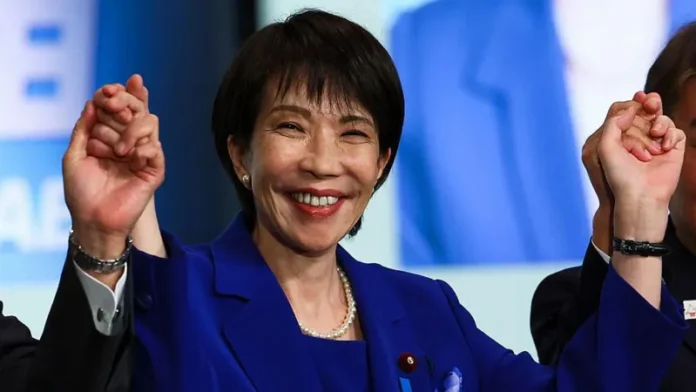Sanae Takaichi has been elected as Japan’s new prime minister, becoming the first woman in the country’s history to hold the position.
The 64-year-old politician, known for her conservative views and close ties to the late former prime minister Shinzo Abe, won a decisive vote in the National Diet on Tuesday.
Takaichi received 237 votes in the Lower House and 125 votes in the Upper House, securing her place as Japan’s leader through her role as head of the ruling Liberal Democratic Party (LDP). She will formally assume office after a meeting with Emperor Naruhito later in the day.
She was born in Nara Prefecture and studied at Kobe University before entering politics in the 1990s. She has long been recognised as a protégé of Abe, having served in several of his cabinets and in the administration of former Prime Minister Fumio Kishida.
Nicknamed Japan’s “Iron Lady”, Takaichi has often expressed admiration for former British prime minister Margaret Thatcher, whom she cites as an inspiration for her political style and economic philosophy.
Her economic approach draws from the principles of “Abenomics,” which favour fiscal stimulus, monetary easing, and structural reform to revive growth.
However, her social views place her firmly on the right of Japan’s political spectrum. She opposes same-sex marriage, supports maintaining male-only imperial succession, and has called for stricter immigration policies.
She is also known for visiting the controversial Yasukuni Shrine, which honours Japan’s war dead, including convicted war criminals; a move that often provokes criticism from China and South Korea.
Japan politics have been turbulent with four prime ministers in five years. She replaces Shigeru Ishiba, who resigned after the LDP suffered heavy losses in recent midterm and upper house elections amid public anger over a fundraising scandal.
Her victory came after an unexpected political turn. The LDP’s long-time coalition partner, the Komeito Party, withdrew its support earlier this month. A last-minute deal with the Japan Innovation Party (Ishin) gave her the votes needed to secure a majority.
Takaichi now faces the task of rebuilding public trust in the LDP, which has governed Japan for most of the past seven decades but has recently been weakened by scandals and voter discontent. She must also confront rising living costs, a rice shortage that has driven record prices, and sluggish economic growth.
Internationally, Takaichi is expected to pursue a firm stance on China and strengthen security ties with the United States.
Her first major diplomatic test will come next week in Washington, where she is scheduled to meet U.S. President Donald Trump. Although both sides have agreed on a tariff deal, Trump’s past comments questioning Japan’s contributions to their defence alliance have raised new concerns in Tokyo.
Despite her historic win, some Japanese citizens, especially young women, are divided over what her leadership represents. “It’s historic that she’s Japan’s first female prime minister,” said Ayda Ogura, a 21-year-old student in Tokyo to BBC.
“But her policies are very traditional. She doesn’t seem interested in changing the system that limits women.”
During her campaign, Takaichi pledged to expand hospital services for women’s health and improve conditions for domestic and care workers. Local media report she may appoint Satsuki Katayama as finance minister, which would also be a first for a woman in Japan.
Analysts say Takaichi’s government will likely be a continuation of conservative governance rather than a break from it.
“She will strengthen Japan’s defence, maintain close U.S. ties, and protect the emperor system,” said Stephen Nagy, professor of politics at the International Christian University in Tokyo.
“Her challenge will be to balance those priorities with the social and economic pressures at home.”



